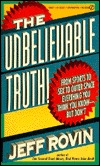Different Strokes for Different Folks in Blogging for Business
Is your business blog reader’s tummy rumbling?
In this month’s Writers Digest, ten winners were announced. Contestants had been given a photo prompt showing a grocery store aisle and asked to write the opening line of a story based on that prompt. My personal two favorites were these:
- “My tummy rumbles as I walk past all the things I cannot buy with the seven dollars in my pocket, the seven dollars for her cigarettes.
- “We fell in love reaching for the same tea and fell apart picking different ice cream.”
I think this exercise illustrated two concepts related to business blog content writing:
The importance of your opening line
- The first sentence of a blog post functions as “a hook:” and, next to the title, it’s the most important set of words in the post, creative-copywriter.net explains, advising writers to “say it fast, strong, and well”, right into the action and addressing their deepest problem instantly.
- Readers are looking for connections. The challenge is to get the reader to nod his or her head, thinking “Yeah, that’s me.” Ann Hanley says in orbitmedia.com.
- Writer’s Digest wasn’t talking about online content, but for blogs, the opening lines are where it’s important to incorporate keyword phrases to help with Search Engine Optimization.
The same general topic can be approached in a myriad of ways.
- In order to add variety, I teach blog content writers to experiment with different formats, including how-to posts, list posts, opinion pieces, and interviews.
- Different posts can present the same business from different vantage points, “featuring” different employees and different departments within the company.
- Individual blog posts – or series of posts – can be tailored to different segments of the customer base.
- Remember that, even within your target market, each reader’s need for information, products or services was born in a slightly different space and has traveled a different path. Not every message will work on every person.
From the very opening line and continuing throughout the blog post, remember – there are different strokes for different folks in blogging for business!






Follow us online!